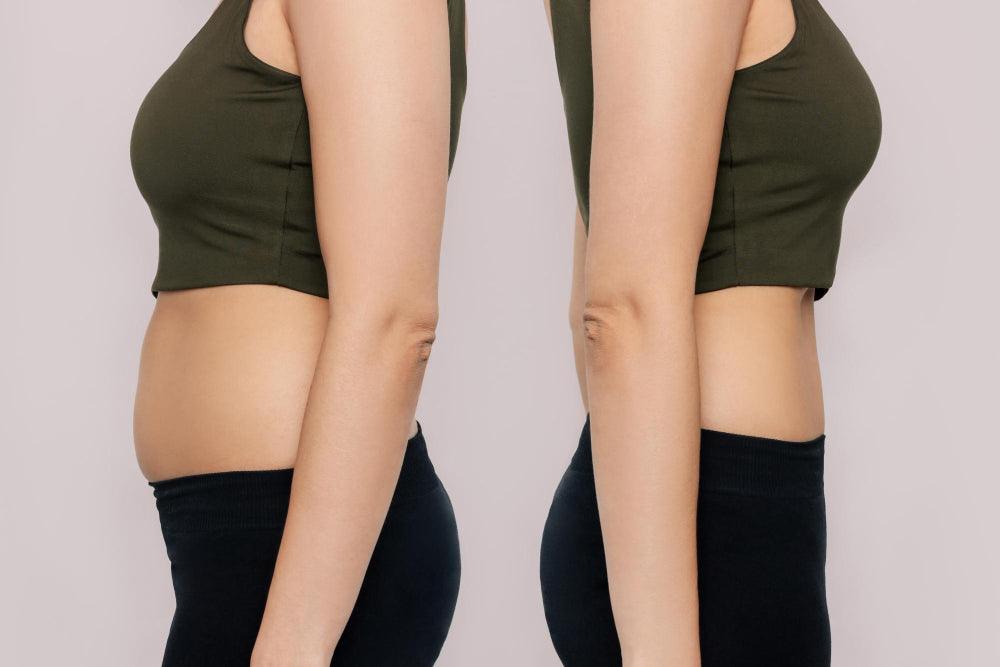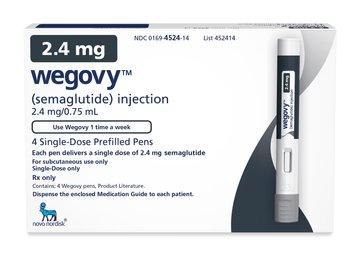How to avoid loose skin after weight loss?

Related products
Why does loose skin occur after Weight Loss?
After significant weight loss, many individuals find themselves facing the challenge of loose skin. Understanding the reasons behind this occurrence can help us tackle this issue more effectively. One of the primary factors contributing to loose skin is the loss of elasticity. When we gain weight, our skin stretches to accommodate the extra volume. However, during weight loss, the skin may not have enough time to adjust and regain its original elasticity. As a result, it remains loose and saggy. Genetics also play a significant role in determining how our skin responds to weight loss. Some individuals are genetically predisposed to have more resilient skin, while others may have a higher likelihood of developing loose skin. Although we cannot change our genetic makeup, there are strategies to minimize the impact. Age is another critical factor. As we grow older, our skin naturally loses some of its elasticity and collagen production slows down. This means that older individuals may be more prone to experiencing loose skin after weight loss.
How Much Loose Skin Can You Expect?
The amount of loose skin a person may experience after weight loss can vary significantly. Several factors influence the degree of skin sagging:
1. Weight loss amount: The more weight you lose, the higher the likelihood of excess skin. Individuals who have lost a significant amount of weight, such as 100 pounds or more, are more likely to have loose skin compared to those who have only shed a few pounds.
2. Duration of weight gain: If you gained weight rapidly over a short period, your skin may have stretched more abruptly, leading to a higher chance of loose skin. Gradual weight gain allows the skin to adjust more slowly, reducing the likelihood of excessive sagging.
3. Age: Older individuals are more prone to loose skin due to the natural loss of skin elasticity that occurs with age.
4. Genetics: Genetic factors influence how our skin responds to weight loss.
Some individuals may have more elastic skin, while others may be genetically predisposed to develop loose skin. It's essential to set realistic expectations regarding loose skin after weight loss. While some individuals may experience minimal sagging, others may have more noticeable loose skin. Consulting with a healthcare professional can provide you with a better understanding of what to expect based on your specific circumstances.
Can Exercise Help Tighten Loose Skin?
Engaging in regular exercise can have a positive impact on loose skin. While exercise alone may not completely eliminate loose skin, it can help tone and firm the body, improving the appearance of sagging skin. Strength training exercises, in particular, can be beneficial for tightening loose skin. By building muscle mass, you can fill out some of the loose areas, giving a more toned and sculpted look to your body. Focus on exercises that target the areas most affected by loose skin, such as the arms, abdomen, thighs, and buttocks. Examples of effective exercises include: - Push-ups and tricep dips to strengthen and tone the arms - Squats and lunges to target the thighs and buttocks - Planks and crunches to engage the core muscles Incorporating these exercises into your fitness routine, along with regular cardio exercises, can contribute to overall body toning and potentially reduce the appearance of loose skin. Remember to consult with a fitness professional or personal trainer to ensure you are performing exercises correctly and using the appropriate form. They can tailor a workout plan specifically designed to target loose skin and help you achieve your desired results.
It's essential to recognize that effective weight loss usually encompasses a comprehensive approach, including managing calorie intake, engaging in regular and healthful physical activities, and occasionally, when necessary, the use of medical aids like Wegovy.
Is Diet Important for Preventing Loose Skin?
While exercise plays a crucial role in tightening loose skin, diet is equally important in maintaining skin elasticity during weight loss. Proper nutrition can support the health and vitality of your skin, minimizing the chances of developing loose skin. To prevent loose skin, it's essential to include specific nutrients in your diet that promote skin health and elasticity. Here are some essential nutrients to focus on:
1. Protein: Including an adequate amount of high-quality protein in your diet is crucial for skin health. Protein provides the building blocks for collagen production, which is essential for maintaining skin elasticity. Good sources of protein include lean meats, poultry, fish, eggs, dairy products, legumes, and tofu.
2. Vitamins and antioxidants: Consuming a variety of fruits and vegetables rich in vitamins A, C, and E can help support skin health. These vitamins act as antioxidants, protecting the skin from oxidative stress and promoting collagen synthesis. Examples of foods high in these vitamins include oranges, strawberries, spinach, kale, carrots, and almonds.
3. Essential fatty acids: Omega-3 fatty acids, found in fatty fish like salmon and sardines, as well as walnuts and flaxseeds, are beneficial for maintaining skin elasticity. These healthy fats help nourish the skin and reduce inflammation, promoting overall skin health.
4. Hydration: Drinking an adequate amount of water is vital for maintaining skin hydration and elasticity. Proper hydration ensures that your skin remains plump and supple. Aim to drink at least eight glasses of water per day and hydrate more if you engage in intense physical activity or live in a hot climate.
Additionally, avoiding excessive consumption of sugary and processed foods is crucial. These foods can contribute to inflammation and damage collagen, negatively affecting skin elasticity. Opt for a balanced diet that includes whole foods, lean proteins, healthy fats, and plenty of fruits and vegetables. Consulting with a registered dietitian or nutritionist can provide personalized guidance on creating a diet plan that supports skin health during weight loss. Remember that a combination of regular exercise and a healthy diet is the most effective approach to preventing loose skin. By taking care of your body from the inside out, you can optimize your skin's elasticity and improve its appearance during and after weight loss.
Hydration and Skin Elasticity
Proper hydration is not only essential for overall health but also plays a vital role in maintaining skin elasticity and preventing loose skin. When your body is well-hydrated, your skin appears plump, supple, and more resilient. Water is the key to maintaining hydration levels in your body and skin. It helps flush out toxins, delivers essential nutrients to the skin cells, and supports the production of collagen, a protein that provides structure and elasticity to the skin. Without adequate hydration, your skin can become dry, dull, and more prone to sagging. So, how much water should you be drinking for optimal skin health? While individual needs may vary depending on factors such as activity level, climate, and overall health, a general guideline is to aim for around 8 glasses of water per day (about 2 litres). However, it's important to listen to your body's thirst signals and drink water whenever you feel thirsty. In addition to water, incorporating hydrating foods into your diet can also contribute to skin elasticity. Fruits and vegetables with high water content, such as watermelon, cucumber, oranges, and lettuce, can provide an extra hydration boost for your skin. Remember, maintaining proper hydration is a continuous process, and it's essential to stay consistent with your water intake. Carry a water bottle with you throughout the day as a reminder to drink regularly, especially during and after exercise or exposure to hot weather.
Gradual Weight Loss vs. Rapid Weight Loss
When it comes to weight loss, the rate at which you lose weight can impact the elasticity of your skin. Gradual weight loss allows your skin to adjust more slowly to the changes in body composition, giving it a better chance to tighten and reduce the chances of loose skin. On the other hand, rapid weight loss doesn't provide sufficient time for the skin to adapt, potentially leading to loose and sagging skin. Losing weight too quickly can result in a higher percentage of muscle loss and a lower percentage of fat loss, which can further exacerbate the appearance of loose skin. To minimize loose skin during weight loss, consider the following strategies:
1. Gradual weight loss: Aim for a weight loss rate of 1-2 pounds per week. This allows your body and skin to adapt gradually to the changes, minimizing the risk of loose skin.
2. Strength training: Incorporate resistance exercises into your fitness routine to build and tone your muscles. Building muscle helps fill out the underlying space left by fat loss, which can improve the appearance of loose skin.
3. Stay hydrated: As mentioned earlier, proper hydration is crucial for maintaining skin elasticity. Drink an adequate amount of water throughout the day to support your skin's health.
4. Maintain a balanced diet: Ensure you're getting proper nutrition, including sufficient protein, vitamins, and minerals, to support skin health during weight loss. A balanced diet promotes collagen production and overall skin elasticity. While some individuals may still experience loose skin despite their best efforts, these strategies can help minimize its appearance and improve overall skin tone.
Building Muscle to Combat Loose Skin
Strength training, or resistance exercises, can be an effective strategy for tightening loose skin and improving its overall appearance. When you engage in strength training, you stimulate muscle growth and development, which can help fill out and tighten the areas affected by loose skin. By building muscle, you create a supportive framework underneath the skin, reducing the sagging appearance. Additionally, increased muscle mass can improve your metabolism and body composition, leading to a more toned and defined physique. To incorporate strength training into your fitness routine:
1. Start with compound exercises: Compound exercises engage multiple muscle groups simultaneously and provide maximum benefit for muscle growth. Examples include squats, deadlifts, bench presses, and rows.
2. Include targeted exercises: Focus on exercises that specifically target the areas most affected by loose skin, such as the arms, abdomen, thighs, and buttocks. For instance, tricep dips, bicep curls, leg presses, and glute bridges can help tone and tighten these areas.
3. Gradually increase weights and resistance: As you progress in your strength training journey, gradually increase the weights or resistance to continue challenging your muscles and promoting growth.
4. Consistency is key: Make strength training a regular part of your fitness routine. Aim for at least two to three sessions per week, allowing enough time for your muscles to recover and adapt.
5. Seek professional guidance: If you're new to strength training or have specific concerns about loose skin, consider working with a personal trainer who can provide guidance and create a tailored workout plan based on your goals and needs. Remember, building muscle takes time and consistency. While strength training can help tighten loose skin, it may not completely eliminate it, especially in cases of significant weight loss. However, the overall benefits to your body composition and confidence make it a worthwhile addition to your fitness journey.
The Benefits of Collagen Supplements
Collagen is a vital protein that provides structure, strength, and elasticity to our skin. It plays a crucial role in maintaining skin health and combating the appearance of loose skin. While our bodies naturally produce collagen, its production decreases with age, contributing to the development of wrinkles and sagging skin. Collagen supplements have gained popularity as a potential solution to support skin health and elasticity. Here are some potential benefits of collagen supplements:
1. Improved skin elasticity: Collagen supplements can help improve skin elasticity and firmness by providing the necessary amino acids to support collagen production in the body.
2. Reduction in wrinkles and fine lines: Studies have shown that collagen supplementation can help reduce the appearance of wrinkles and fine lines, resulting in smoother, more youthful-looking skin.
3. Enhanced skin hydration: Collagen helps retain moisture in the skin, promoting hydration and preventing dryness. This can contribute to a plumper, more supple complexion.
4. Support for joint health: In addition to its benefits for the skin, collagen is also essential for maintaining healthy joints and connective tissues. Supplementing with collagen may help alleviate joint pain and improve mobility.
It's important to note that while collagen supplements show promise in improving skin health, results can vary among individuals. Factors such as the quality of the supplement, dosage, and individual response may influence the effectiveness. Consulting with a healthcare professional or dermatologist can provide personalized guidance on whether collagen supplementation is suitable for you and help you choose a reputable product.
It's worth mentioning that collagen supplements should be used as a complementary approach alongside a healthy lifestyle, including a balanced diet, regular exercise, and proper skincare routine.
Non-Surgical Options for Loose Skin
If you're looking to address loose skin without undergoing surgery, there are several non-invasive procedures available that can help tighten and improve the appearance of sagging skin. Here's an overview of some popular non-surgical treatment options:
1. Radiofrequency (RF) Therapy: RF treatments use radiofrequency energy to heat the deeper layers of the skin, stimulating collagen production and tightening loose skin. This procedure is non-invasive, painless, and typically requires multiple sessions for optimal results.
2. Laser Skin Tightening: Laser treatments utilize laser energy to heat the skin and stimulate collagen production. This helps tighten loose skin and improve overall skin texture. Laser skin tightening is effective for various body areas and may require several sessions.
3. Ultrasound Therapy: Ultrasound treatments use focused ultrasound energy to target specific areas of loose skin. This energy heats the deep layers of the skin, stimulating collagen production and tightening the tissue. Ultrasound therapy is non-invasive, safe, and typically requires a few sessions.
4. Microneedling: Microneedling involves using a device with fine needles to create tiny punctures in the skin. This process triggers the body's natural healing response, leading to increased collagen production and skin tightening. Microneedling may require multiple sessions to achieve desired results.
5. Chemical Peels: Chemical peels involve the application of a chemical solution to the skin, which exfoliates the outer layer and promotes the growth of new, healthier skin cells. While chemical peels primarily target skin texture and discoloration, they can also have a mild tightening effect on the skin.
It's important to note that the effectiveness of these non-surgical treatments can vary depending on individual factors such as the extent of loose skin, age, and overall skin health. Consulting with a dermatologist or aesthetic professional is crucial to determine the most suitable treatment option for your specific needs.
Each non-surgical procedure has its pros and cons. While they are generally considered safe and require little to no downtime, the results may be less significant compared to surgical options. Additionally, multiple sessions may be necessary to achieve optimal outcomes. It's essential to have realistic expectations and discuss the potential benefits and limitations of each treatment with a qualified professional before making a decision.
Surgical Solutions for Loose Skin
In some cases, surgical intervention may be necessary to address significant loose skin after weight loss. Surgical procedures can provide more dramatic and long-lasting results. Here are some common surgical options for removing excess skin:
1. Tummy Tuck (Abdominoplasty): A tummy tuck is a surgical procedure that removes excess skin and fat from the abdomen. It also tightens the underlying abdominal muscles, resulting in a flatter and more toned appearance.
2. Body Lift: A body lift is a comprehensive procedure that targets multiple areas of loose skin, such as the abdomen, buttocks, thighs, and arms. It involves removing excess skin and repositioning the remaining tissue to create a more contoured body shape.
3. Arm Lift (Brachioplasty): An arm lift focuses on removing loose skin and fat from the upper arms. The procedure can improve the appearance of sagging or "batwing" arms, resulting in tighter and more defined contours.
4. Thigh Lift: A thigh lift is performed to address sagging skin on the thighs. It involves removing excess skin and reshaping the remaining tissue to achieve smoother and more toned thighs.
5. Breast Lift (Mastopexy): A breast lift is a surgical procedure that lifts and reshapes sagging breasts. It removes excess skin, repositions the nipple and areola, and tightens the breast tissue to restore a more youthful and lifted appearance.
Surgical solutions for loose skin are typically more invasive and require a longer recovery period compared to non-surgical options. However, they can provide more significant and long-lasting results, especially for individuals with substantial amounts of loose skin.
It's important to note that surgical procedures carry risks and potential complications, including scarring, infection, and anaesthesia-related risks. Therefore, it's crucial to consult with a board-certified plastic surgeon who can evaluate your specific case, discuss the potential benefits and risks, and recommend the most appropriate surgical option for your needs and goals.
Preventive Measures During Weight Loss
While it may not be possible to completely prevent loose skin during weight loss, there are several preventive measures you can take to minimize its occurrence. Here are some tips to help maintain skin health and elasticity during your weight loss journey:
1. Gradual weight loss: Aim for a steady and gradual weight loss of 1-2 pounds per week. Rapid weight loss can increase the likelihood of loose skin, as the skin doesn't have enough time to adapt to the changes in body composition.2. Stay hydrated: Proper hydration is crucial for maintaining skin elasticity. Drink an adequate amount of water throughout the day to keep your skin hydrated and healthy.
3. Balanced nutrition: Ensure you're getting proper nutrition, including sufficient protein, vitamins, and minerals. A balanced diet promotes collagen production and overall skin health.
4. Exercise regularly: Incorporate both cardio and strength training exercises into your fitness routine. Strength training can help build muscle mass and improve body tone, reducing the appearance of loose skin.
5. Avoid smoking and excessive sun exposure: Smoking and UV radiation from the sun can damage collagen and elastin fibres, leading to decreased skin elasticity. Quit smoking and protect your skin from the sun by wearing sunscreen and protective clothing.
6. Skincare routine: Establish a skincare routine that includes gentle cleansing, moisturizing, and regular exfoliation. These practices can promote skin health and improve its overall appearance. It's important to remember that everyone's skin is unique, and the amount of loose skin experienced during weight loss can vary. While these preventive measures can help minimize the likelihood of loose skin, they may not completely eliminate it. Embracing a positive body image and seeking support from healthcare professionals and support groups can also be beneficial during your weight loss journey.
Success Stories: Real People's Experiences
Real-life success stories can be incredibly inspiring and provide valuable insights for those seeking to avoid or minimize loose skin after weight loss. Here are a few stories of individuals who achieved remarkable results:
1. Emma's Transformation: Emma, a 35-year-old mother of two, lost 100 pounds over the course of a year through a combination of regular exercise and a balanced diet. She focused on strength training to build muscle and improve body tone. Emma also used hydrating skincare products and maintained a positive mindset throughout her journey. Today, she proudly shares her before-and-after photos, showcasing her tightened and toned physique.
2. John's Journey: John, a 50-year-old man, embarked on a weight loss journey after being diagnosed with obesity-related health issues. He lost 150 pounds over two years through a combination of diet, exercise, and professional guidance. John underwent a body lift surgery to remove excess skin and achieve a more sculpted appearance. He emphasizes the importance of patience, consistency, and a supportive network in achieving his goals.
3. Paola's Sustainable Approach: Paola, a 28-year-old fitness enthusiast, lost 50 pounds over the course of a year by adopting a sustainable approach to weight loss. She focused on slow and steady progress, incorporating a balanced diet, regular exercise, and strength training into her routine. Although she experienced some loose skin, Paola embraced her body's changes and focused on maintaining overall health and well-being. She encourages others to prioritize self-care, patience, and a positive mindset throughout their weight loss journeys.
These success stories highlight the importance of adopting a holistic approach to weight loss, including a combination of healthy habits, consistent exercise, and a positive mindset. While loose skin may be a potential challenge, it doesn't diminish the achievements and transformations that individuals can experience on their weight loss journeys.
Remember, each person's experience is unique, and what works for one individual may not work the same way for another. It's essential to consult with healthcare professionals, including dermatologists and plastic surgeons, to discuss personalized strategies and options that suit your specific needs and goals.
Frequently Asked Questions (FAQs)
Here are some frequently asked questions regarding loose skin after weight loss:
Is it possible to avoid loose skin after weight loss?
While it may not be possible to completely avoid loose skin after weight loss, there are preventive measures you can take, such as gradual weight loss, hydration, exercise, and maintaining skin health, to minimize its occurrence.
Will I have loose skin after losing 50 pounds?
The likelihood of experiencing loose skin after losing 50 pounds can vary depending on factors such as age, genetics, and the rate of weight loss. Gradual weight loss and incorporating strength training exercises can help minimize loose skin.
Will losing 20kg cause loose skin?
Losing 20kg may result in some degree of loose skin, particularly if the weight loss occurs rapidly. However, factors such as age, genetics, and skin elasticity also play a role. Gradual weight loss and following preventive measures can help reduce the appearance of loose skin.
Will loose skin tighten over time?
In some cases, loose skin may naturally tighten over time, especially with gradual weight loss and maintaining a healthy lifestyle. However, the extent of skin tightening varies among individuals. Skin care routines, strength training exercises, and non-surgical treatments may also help improve skin elasticity.
How to tighten skin after weight loss naturally?
Natural methods to tighten skin after weight loss include staying hydrated, maintaining a balanced diet, incorporating strength training exercises, practicing good skincare routines, and potentially using collagen supplements. These approaches can support skin health and improve elasticity.
How much weight loss causes loose skin?
The amount of weight loss that causes loose skin can vary among individuals. Factors such as age, genetics, and the rate of weight loss play a significant role. Rapid weight loss or losing a significant amount of weight, such as 100 pounds or more, may increase the likelihood of loose skin.
Collagen for loose skin after weight loss?
Collagen supplements have shown potential in supporting skin health and elasticity. Collagen is a protein that contributes to the structure and firmness of the skin. While collagen supplements may help improve skin appearance, individual results can vary. Consult with a healthcare professional for personalized advice.
How to avoid loose skin after 100-pound weight loss?
To minimize loose skin after a 100-pound weight loss, consider gradual weight loss, strength training exercises, maintaining hydration, consuming a balanced diet, and supporting skin health with proper skincare routines. Consulting with a healthcare professional can provide tailored recommendations.
Supplements to tighten skin after weight loss?
Collagen supplements are often considered for improving skin elasticity after weight loss. Other supplements such as vitamins A, C, and E, as well as omega-3 fatty acids, may also support skin health. However, it's important to consult with a healthcare professional before starting any supplements.
Can you prevent loose skin when losing weight?
While it may not be possible to prevent loose skin entirely, there are preventive measures you can take to minimize its occurrence. These include gradual weight loss, hydration, exercise, strength training, maintaining a balanced diet, and practicing good skincare routines.
Conclusion
Avoiding loose skin after weight loss is a common concern, but with the right strategies, you can minimize its occurrence and improve skin elasticity. Gradual weight loss, hydration, exercise, strength training, proper nutrition, and skincare routines all play important roles in maintaining skin health and appearance. Remember that each person's experience with loose skin may differ based on factors such as age, genetics, and the amount of weight loss. Embrace a holistic approach to weight loss, prioritize self-care and patience, and consult with healthcare professionals for personalized advice and guidance. Embarking on a weight loss journey is an admirable endeavour, and loose skin should not deter you from achieving your goals. Focus on the positive changes you're making for your overall health and well-being. Stay motivated, stay consistent, and celebrate every milestone along the way. Remember, your journey is unique, and the journey to a healthier you is worth it.












 Rated Excellent by 26,523+ Reviews
Rated Excellent by 26,523+ Reviews